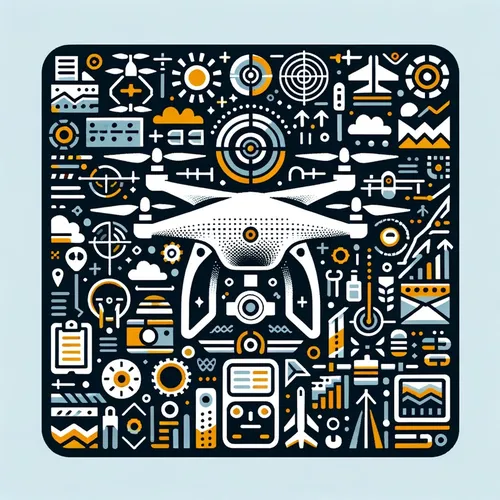Drone Pilots Soar High: Tech Breakthroughs, Big Bucks, and Tricky Regs - Oh My!
- Author
- Quiet. Please
- Published
- Fri 29 Aug 2025
- Episode Link
- https://www.spreaker.com/episode/drone-pilots-soar-high-tech-breakthroughs-big-bucks-and-tricky-regs-oh-my--67551077
This is you Professional Drone Pilot: Flight Tips & Industry Updates podcast.
Professional drone pilots are entering a new era as aerial platforms become more advanced, demanding not just flight expertise but a deep understanding of technology, regulations, and evolving market opportunities. The latest breakthroughs in unmanned aerial vehicle design for 2025 include modular payloads, smarter artificial intelligence navigation, and battery innovations, with some next-generation units delivering up to thirty percent longer flight times according to DSLRPros. These improvements mean inspection specialists and commercial operators can complete large-scale missions in fewer sorties, especially with refined propulsion systems that keep drones stable in high winds and complex environments, making technical mastery of flight maneuvers and real-time decision-making more important than ever.
Maintaining peak equipment performance starts with adopting predictive maintenance practices, driven by new data analytics and sensor technology. Industry research from Archive Market Research points to a five percent annual growth rate in drone maintenance services, with many operators now relying on specialized software like Airdata UAV. This kind of automated fleet management ensures meticulous preflight checks, timely repairs, and compliance with regulatory updates—while minimizing costly downtime. Sustainability is also shaping the way professionals dispose of batteries and electronic waste, as clients increasingly expect eco-friendly business practices alongside operational reliability.
The commercial drone market continues its impressive expansion, forecasted to exceed two hundred thirty billion dollars by the end of 2025 according to The Business Research Company, with insurance, real estate, agriculture, and infrastructure maintenance driving demand for certified pilots. Opportunities in the burgeoning drone-as-a-service model let specialists bundle inspection, mapping, and remediation into premium packages. Pricing effectively requires careful calculation of hourly rates versus project fees, transparent coverage for travel, insurance costs, and deliverables, and a clear contract that spells out responsibilities and expectations.
Navigating certification and licensing is still a top priority. The Federal Aviation Administration mandates all commercial drone operators pass the Part 107 knowledge test, covering regulations, airspace restrictions, weather impacts, operational best practices, and safety management. Renewals are now required every twenty-four months, with recurrent online training available free through the FAA’s portal, ensuring pilots stay sharp as rules evolve. Internationally, licensing standards are tightening as governments address remote identification and privacy issues—so tracking policy changes in your region is essential for future readiness.
Client relations hinge on professionalism; building trust starts with transparent communication, clear pricing, documented deliverables, and robust liability coverage. Insurance markets for drones are shifting, with providers offering tailored policies for accident, theft, and damage, and periodic audits of coverage recommended to stay ahead of new risks in the field.
Weather remains an unpredictable challenge—prepare by reviewing forecasts, setting wind tolerances, scheduling flights in optimal conditions, and keeping alternate plans ready for high-risk sites. For future pilots, artificial intelligence-powered flight planning tools will continue to automate airspace analysis and route optimization, reducing human error and streamlining logistics.
In closing, the professional drone space is evolving rapidly, with new technologies, regulatory standards, and market opportunities shaping every aspect of the business. Focus on advanced skill development, proactive equipment management, strong client...
